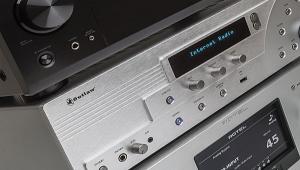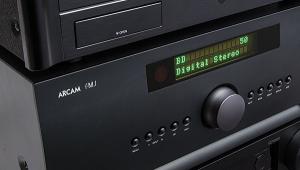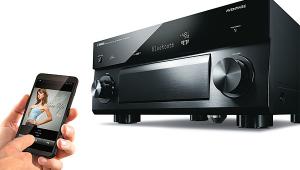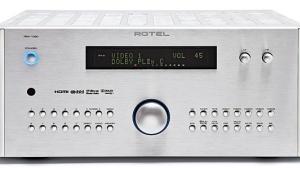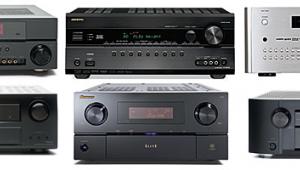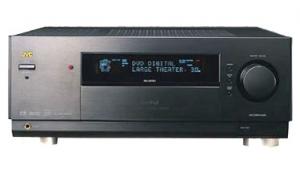How to Buy an A/V Receiver
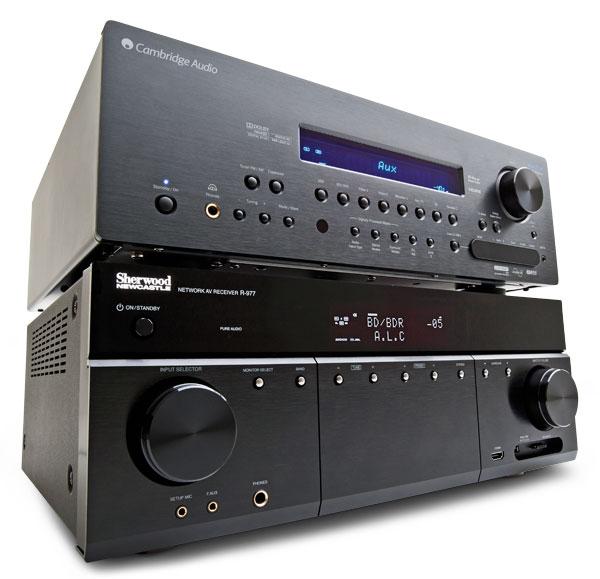
What’s in There?
An A/V receiver combines three audio components in one box. Primarily, it performs the traditional roles of a preamplifier and power amplifier. The sound for any
home theater begins as a low-level audio signal coming off a source component such as a
cable box or disc player. These days, it’s
more likely to be a digital audio signal than
an analog signal. That signal gets converted between digital and analog as needed, manipulated to affect your volume adjustment, and might perhaps have some bass and treble contouring (or more sophisticated equalization) applied before it’s sent to the power amplifier, whose only job is to pump it up to the power level necessary to drive your speakers to sufficient volume.
Today’s AVRs perform a third important function in the same chassis, and that is to decode and steer the multichannel digital soundtracks found on Blu-ray Discs, DVDs, broadcasts, and Internet-streamed programs. In the early days of surround sound, this was performed by a standalone processor, but now it’s seamlessly integrated with the preamp section of the receiver. The surround processors in modern AVRs also allow you to turn two-channel stereo content into some form of multichannel surround sound utilizing all your speakers.
The preamp section of your AVR further provides switching from one source component to another, so you can go from watching a Blu-ray to a TV show with the push of a button. Since the receiver must accept both the audio and video signal to achieve this routing, AVRs have evolved to where many also provide video processing that simplifies hookup of different types of source components to your HDTV and may improve image quality at the same time. Here are some key areas to pay attention to when purchasing an AVR.
Channels and Power
A great amplifier with power to spare will rise to the occasion on loud, complex passages without introducing audible distortion. Think of a tiny economy coupe and a high-end sports car travelling side by side on a highway at 50 miles per hour. Each manages
the task just fine. But when you have to hammer the gas pedal to get out of trouble,
the Tinker Toy putters out while the Ferrari blasts off like a rocket, with juice to spare. That’s loosely analogous to how your receiver behaves when the music or movie soundtrack calls for a sudden, dynamic peak such as a tympani whack or an explosion. At 50
mph—normal room volume—everything
is fine, until you hit that peak. And if you’ve
got a penchant for listening at higher volume, say 80 or 100 mph (get it?), there’s even less headroom, and you’ll be inviting strained
and hard sound quality on any complex or demanding passage.
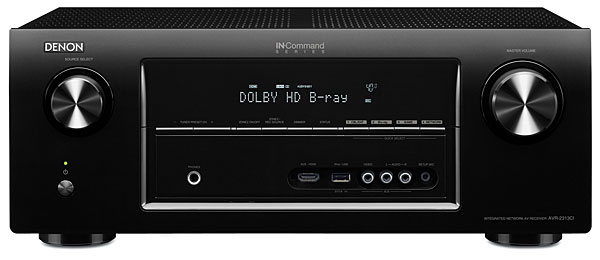
Determining precise power requirements for your needs can be tricky, though. Not only does it depend on your room size and your speakers’ efficiency in converting power into sound, but you can’t count on manufacturers’ power ratings from one AVR to another for an accurate reading of a unit’s true capabilities. Two AVRs, both rated to attain 100 watts per channel RMS at low 0.1 percent distortion while driving a pair of 8-ohm-rated front stereo speakers, may not perform the same way when called on to play loudly with complex multichannel content. Some AVRs will run out of steam and clamp down on power output to all the channels or even shut down temporarily to avoid overheating and potential damage.
A telling sign is the five- and sevenchannels-driven test bench measurements Home Theater includes with AVR reviews. Although this torture test is far more demanding than any real-world situation an AVR is likely to encounter, power output that meets or comes reasonably close to the published two-channel specification with five or seven channels working all out simultaneously usually indicates a more robust power supply and the ability to drive your system to louder levels with less strain. Keep in mind, though, that the amp that achieves this isn’t always the biggest or heaviest. Newer circuit topologies—notably Class D switching amps—can deliver their power to the speakers more efficiently than traditional hot-running Class AB or Class A amplifiers. However, Class D AVRs seem to vary widely in sound quality. Read the reviews before you decide.
THX-certified AVRs, when mated with THX-certified speakers, will guarantee the ability to achieve a certain volume level in a room whose cubic volume is specified by the level of certification. Visit THX.com for more information.
How many channels and speakers do you need? Many experts agree that the basic 5.1-channel configuration is sufficient for an engaging home theater experience. This includes front-, left-, center-, and rightchannel speakers; a pair of surround speakers placed ideally along the side walls (and slightly behind the prime seats); and a dedicated powered subwoofer (the .1). Recently, however, we’re seeing more and more Blu-ray Discs that carry discrete high-resolution 7.1-channel soundtracks to justify adding back-wall surrounds. Still, extra speakers beyond 5.1 channels should be considered an enhancement and not a requirement. If your AVR comes with two extra channels, they can often be configured to drive a pair of Zone 2 speakers in another room.
Beyond seven channels are AVRs with nine or even 11 channels (through a combination of speaker- and line-level amplifier outputs) that can make use of the front height and front width channels derived artificially from 5.1-channel soundtracks by some of today’s advanced surround modes (see below). Again, with no discrete soundtracks available to take full advantage of these extra speakers, the value of adding them remains debatable.
Surround Modes
You need to know about surround modes to operate an AVR, but you won’t have to worry about them while shopping since every modern receiver offers the same few basic surround modes required to directly decode the soundtracks embedded in today’s software and broadcasts. Although these are often accompanied by additional playback modes, and experimentation is encouraged, you are best advised to play back your content using whatever mode is native to the original soundtrack. This will likely be standard Dolby Digital and DTS embedded on DVDs and
the high-resolution lossless formats Dolby TrueHD and DTS-HD Master Audio found now on most Blu-ray Discs. The latter formats are noticeably superior to the earlier lossy compression formats. Most TV broadcasts carry lossy Dolby Digital, and some streaming content from major services, such as Vudu and Netflix, are now using Dolby Digital Plus, which provides modest benefits in transmission efficiency or sound quality over traditional lossy Dolby Digital. Set your new AVR’s surround mode to its automatic setting, and if you’ve selected bitstream audio output from the menus in your Blu-ray player and other digital sources, the receiver should recognize what’s on the source material and set the surround mode accordingly. If you set your player to PCM audio output and hook it up via an HDMI connection, full multichannel decoding will usually take place in the player, and it will be indicated as multichannel PCM on the AVR’s display. The sound quality should be the same either way, though Blu-ray players can only pass button sound effects
and secondary simultaneous audio tracks associated with the disc extras if the player is set to PCM.
